The Forests’ Social Ecosystem
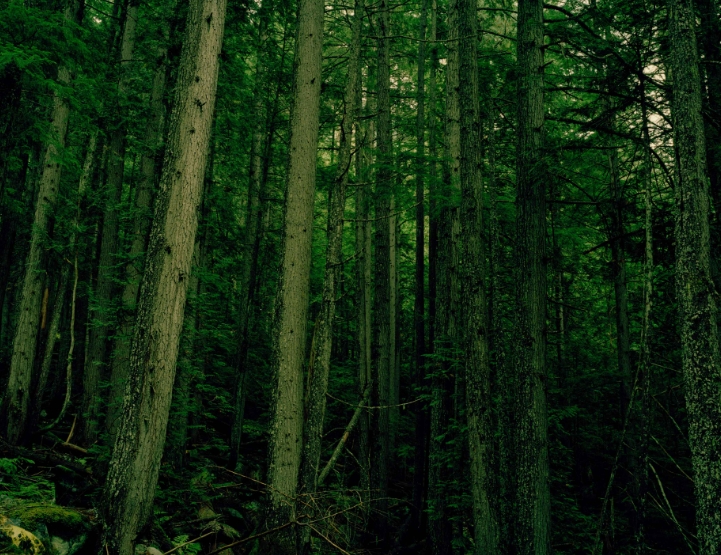
Do trees communicate and collaborate by means of underground networks of fungi? What kind of information do they exchange?
During her childhood, Suzanne Simard often explored Canada’s ancient forests with her siblings, where they built forts, gathered mushrooms and huckleberries, and even tasted handfuls of earth (finding it strangely appealing). Meanwhile, her grandfather and uncles worked as horse loggers nearby, employing sustainable methods to selectively harvest cedar, Douglas fir, and white pine. Their impact on the forest was so minimal that Simard hardly noticed any changes. To her, the forest appeared timeless and boundless, adorned with towering conifers, glistening raindrops, and lush ferns. It was a place of untouched natural beauty, a realm she perceived as perfect in its raw state. When she began her studies at the University of British Columbia, the field of forestry felt like a natural calling, aligning perfectly with her deep connection to this cherished domain.
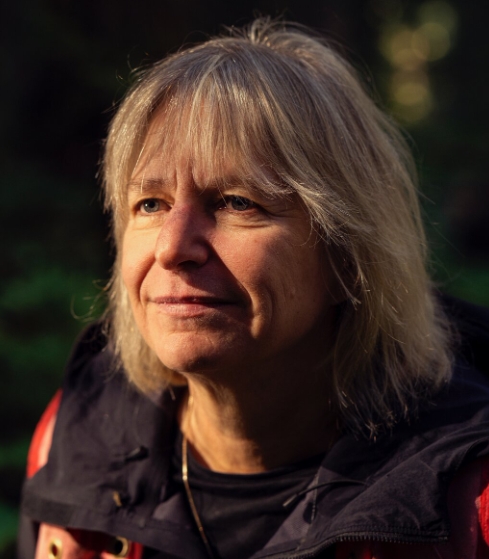
During her time in graduate school at Oregon State University, Simard came to realize that the sustainable logging practices of the past had been largely replaced by commercial clearcutting. This practice involved replacing diverse forests with uniform plantations, neatly spaced in soil that had been stripped of most undergrowth. The prevailing belief was that without competition, the newly planted trees would flourish. However, it turned out that these monoculture forests were often more susceptible to diseases and environmental stress compared to the trees in old-growth forests. Simard specifically observed that when nearby aspen, paper birch, and cottonwood trees were removed, as many as 10 percent of newly planted Douglas firs would become sick and die. The reasons behind this phenomenon remained unclear. Despite having ample space, more light, and increased water availability compared to trees in older, denser forests, these young saplings were surprisingly fragile.
Simard had a hunch that the answer lay hidden beneath the soil’s surface. In the subterranean realm, trees and fungi engaged in mutually beneficial partnerships called mycorrhizas: Delicate fungal threads encircled and fused with tree roots, aiding in the extraction of essential water and nutrients such as phosphorus and nitrogen. In return, trees provided the fungi with carbon-rich sugars produced through photosynthesis. While previous research had hinted at mycorrhizal connections between plants and their potential ecological significance, most studies had been conducted in controlled environments like greenhouses and laboratories rather than in the wild. Determined to explore the fungal links between Douglas fir and paper birch in the forests of British Columbia, Simard embarked on this investigation for her doctoral thesis. Despite facing skepticism, especially from her predominantly male peers, she persevered. She recalled:
“The old foresters were like, ‘Why don’t you just study growth and yield?’ I was more interested in how these plants interact. They thought it was all very girlie.”
As a professor of forest ecology at the University of British Columbia, Suzanne Simard, now 60, has dedicated almost three decades to studying intricate networks of roots and fungi spanning the Arctic, temperate, and coastal forests of North America. Her initial intuitions regarding the significance of mycorrhizal networks have proven to be groundbreaking, inspiring entirely new avenues of research that have revolutionized longstanding misconceptions about forest ecosystems. Through DNA analysis of root tips and the tracking of molecular movement within underground pathways, Simard has unveiled a stunning revelation: fungal threads intricately connect nearly every tree in a forest, transcending species boundaries. Through these subterranean circuits, carbon, water, nutrients, alarm signals, and hormones can traverse from one tree to another. Typically, resources flow from the oldest and largest trees to the youngest and smallest. Moreover, chemical alarm signals emitted by one tree prepare neighboring trees for impending threats. Seedlings severed from the forest’s subterranean lifelines face a significantly higher likelihood of perishing compared to their network-connected counterparts. Remarkably, when a tree nears the brink of death, it often bequeaths a substantial portion of its carbon to its neighboring trees.
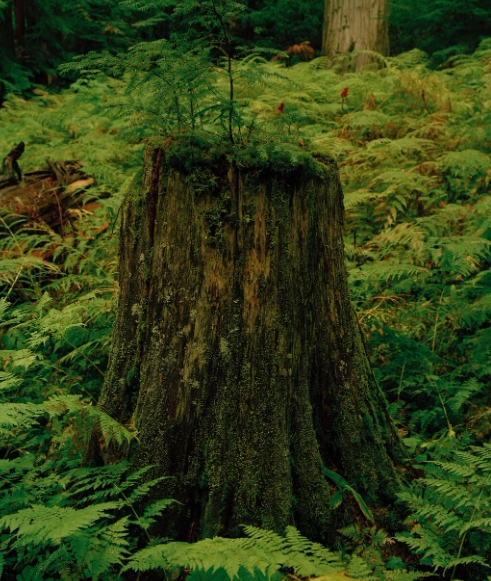
While Suzanne Simard initially faced skepticism and occasional criticism from her peers during her early research, she has since earned widespread recognition as one of the most meticulous and inventive scientists investigating plant communication and behavior. David Janos, a co-editor of the scientific journal Mycorrhiza, lauded her published research as “sophisticated, imaginative, cutting-edge,” while Jason Hoeksema, a biology professor at the University of Mississippi specializing in mycorrhizal networks, concurred that she has significantly advanced the field. Several of Simard’s studies are now included in textbooks and form part of the curriculum for graduate-level courses in forestry and ecology. Moreover, she served as a primary source of inspiration for a central character in Richard Powers’s Pulitzer Prize-winning novel from 2019, “The Overstory,” portraying the visionary botanist Patricia Westerford. In May, Knopf is set to release Simard’s own memoir, “Finding the Mother Tree,” a compelling and vibrant account of her lifelong quest to demonstrate that “the forest was more than just a collection of trees.”
For many years, biologists have largely adopted an individual-centric perspective, a viewpoint that has been prevalent since Darwin’s time. This perspective has underscored the ongoing competition between distinct species, the individual struggle of each organism to endure and propagate within its respective population, and, at the core, the unwavering drive of self-serving genes. Nevertheless, from time to time, certain scientists, although occasionally facing controversy, have advocated for a shift in focus towards cooperation rather than self-interest and towards the collective properties that emerge from living systems as opposed to concentrating solely on their individual components.
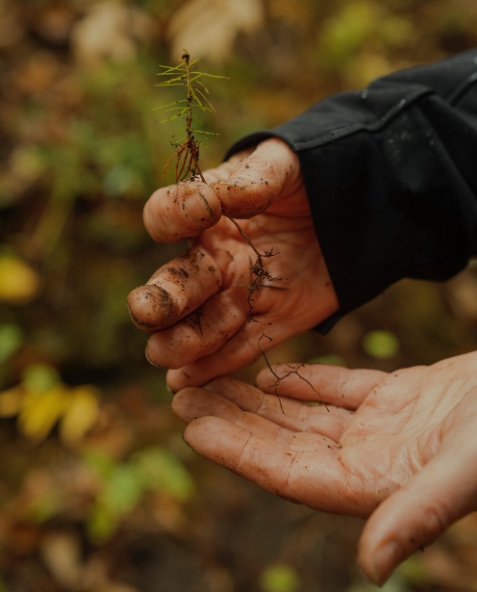
Before the revelations by Simard and other ecologists regarding the extensive and meaningful mycorrhizal networks, foresters generally perceived trees as isolated individuals competing for space and resources, seemingly indifferent to one another. However, Simard and her colleagues have shown that this perspective is overly simplistic. An old-growth forest transcends being a mere gathering of independent organisms coexisting or engaging in relentless competition. Instead, it represents a sprawling, ancient, and intricate society where conflict coexists with negotiation, reciprocity, and perhaps even acts of selflessness. Within a forest, the trees, understory plants, fungi, and microbes are so profoundly interconnected, communicative, and mutually reliant that some scientists liken them to superorganisms. Recent studies also indicate the presence of mycorrhizal networks in prairies, grasslands, chaparral, and Arctic tundra—essentially, across all terrestrial life. Collectively, these symbiotic partners weave Earth’s soils into vast, nearly continuous living networks of immense scale and complexity. Simard remarked:
“I was taught that you have a tree, and it’s out there to find its own way. It’s not how a forest works, though.”
In the summer of 2019, I had the opportunity to meet Simard in Nelson, a quaint mountain town not far from her childhood home in southern British Columbia. One morning, we embarked on a journey up a serpentine road that led to an ancient forest, ready to explore its depths. As soon as we stepped into the forest, my senses were captivated by a unique fragrance that permeated the air. It was a subtle blend of zesty orange peel and warm cloves. Overhead, majestic green canopies allowed sunlight to generously bathe certain areas of the forest floor while casting a dappled pattern of light in others. Along our path, twisted roots intricately wove themselves in and out of the earth, resembling mythical sea serpents. Lost in my own connection with the forest, it wasn’t until Simard raised the idea that I contemplated how the forest might perceive us in return.
“I believe these trees possess a remarkable level of perception,” she remarked. “They are highly attuned to their surroundings, especially to the organisms growing in close proximity. I’m particularly intrigued by the idea of whether they can sense us.”
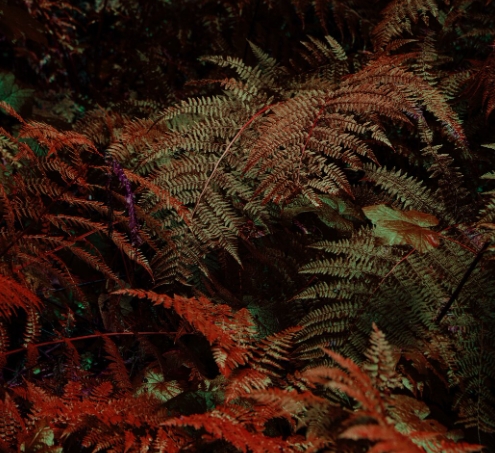
I sought further clarification, and Simard went on to elaborate that trees have the ability to detect nearby plants and animals, subsequently adapting their behavior in response. For instance, encountering the menacing jaws of an insect may trigger the tree to produce chemical defenses. Some scientific investigations have even hinted that plant roots exhibit a tendency to grow toward the sound of flowing water, while certain flowering plants adjust the sweetness of their nectar upon detecting a bee’s wing beats.
“Trees have a remarkable capacity to perceive various stimuli,” Simard concluded. “So, why not us as well?”
I pondered this prospect as we continued our hike through the forest, well into our second hour. Our bodies had been releasing distinct chemical signals through our sweat glands. Every word spoken and every step taken sent ripples of pressure through both the air and the soil. As we traversed the terrain, our physical forms inevitably came into contact with the trunks of trees and occasionally displaced branches. At that moment, it felt entirely conceivable that the trees had indeed registered our presence.
Further along the trail, we stumbled upon a sunlit alcove, a perfect spot to pause and converse. Our backpacks were gently laid against a log blanketed in lush moss and adorned with lichen. The log’s verdant cover hosted a multitude of minuscule plants. Curious, I inquired about their identity. Simard lowered her head for a closer inspection, tucking her frizzy blonde hair behind her ears. She proceeded to identify the various species:
- queen’s cup, a type of lily;
- five-leaved bramble, akin to wild raspberries;
- and the seedlings of both cedar and hemlock trees.
While examining the log, a section of it gave way, revealing the decaying interior. Intrigued, Simard delved deeper with her thumbs, unveiling a network of resilient, mustard-yellow filaments deeply embedded in the wood.
“That’s a fungus!” she exclaimed. “It’s Piloderma, a highly prevalent mycorrhizal fungus.”
She had come across this type of fungus in situations like this countless times before.
“This mycorrhizal network is actually connected to that tree.”
She pointed towards a towering hemlock nearby, reaching over a hundred feet in height.
“That tree is nourishing these young seedlings.”

In her early and well-known experiments, Simard planted mixed groups of young Douglas fir and paper birch trees in forest plots and covered the trees individually with plastic bags. Within each plot, she introduced radioactive carbon dioxide to the bags surrounding one tree species and a stable carbon isotope (a variant of carbon with a different number of neutrons) to the bags covering the other species. These trees absorbed these distinct carbon forms through their leaves. Later, she ground up the trees and examined their chemistry to determine if carbon had transferred between species underground. Indeed, it had. During the summer, when the smaller Douglas fir trees were typically in the shade, carbon primarily moved from birch to fir. In the fall, when the evergreen Douglas fir continued to grow and the deciduous birch shed its leaves, the net flow reversed. This exchange supported her earlier observations that the two species relied on each other. No one had previously documented such a dynamic resource exchange through mycorrhizal networks in natural settings. In 1997, a portion of Simard’s thesis was published in the prestigious scientific journal Nature—a remarkable accomplishment for someone relatively new to the field. Nature featured her research on its cover with the title “The Wood-Wide Web,” a name that would later become widespread in published studies and popular science literature.
In 2002, Simard secured her current position as a professor at the University of British Columbia, where she continued her research on interactions among trees, understory plants, and fungi. Working alongside students and collaborators from around the world, she made a series of astonishing discoveries. Mycorrhizal networks were prevalent in North American forests. Most trees formed symbiotic relationships with multiple fungal species, displaying a high degree of adaptability. In one study encompassing six Douglas fir stands, each covering approximately 10,000 square feet, nearly all the trees were interconnected underground by no more than three degrees of separation. A particularly large and ancient tree was linked to 47 other trees and projected to be connected to at least 250 more. Moreover, seedlings with full access to the fungal network had a 26 percent higher likelihood of survival compared to those without such access.
Depending on the specific tree species involved, mycorrhizal associations provided trees and other plants with as much as 40 percent of the nitrogen they obtained from the environment and up to 50 percent of the necessary water for their survival. Underground, trees exchanged between 10 and 40 percent of the carbon stored in their roots. In situations where Douglas fir seedlings were stripped of their leaves and at risk of dying, they transmitted stress signals and a significant amount of carbon to nearby ponderosa pine trees. This exchange prompted the ponderosa pine to increase its production of defensive enzymes. Moreover, Simard’s research revealed that clearing a harvested forest of all its trees, ferns, herbs, and shrubs—a common forestry practice—did not consistently enhance the survival and growth of newly planted trees; in some cases, it had detrimental effects.
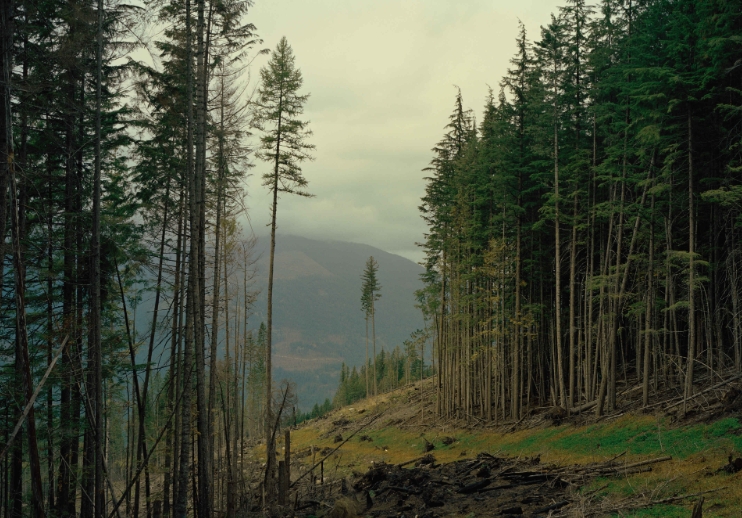
When Simard began publishing her groundbreaking research, she faced considerable resistance from some of her colleagues. They raised objections regarding her innovative methods and challenged her findings. Many found it perplexing that trees from different species would collaborate, seemingly at their own expense, displaying a remarkable level of altruism that appeared to contradict the fundamental principles of Darwinian evolution. Consequently, references to her studies were often accompanied by citations of published rebuttals. Simard recounts in her book that her work was increasingly overshadowed by controversy. In her quest for evidence of interdependence within the forest ecosystem, she had inadvertently ignited one of the oldest and most fervent debates in the field of biology: Is cooperation as integral to evolution as competition?
The debate over whether plants possess a degree of consciousness or agency has a lengthy and contentious history.
While it’s clear that plants are living organisms, their rooted nature, lack of mobility on a human time scale, and apparent passivity often lead them to be perceived as more environmental elements than active agents. Western culture, in particular, tends to position plants in a kind of transitional space between inanimate objects and living organisms. This very ambiguity is what makes the concept of plant intelligence and social interaction both captivating and subject to debate.
In their 1973 book titled “The Secret Life of Plants,” journalists Peter Tompkins and Christopher Bird made bold claims that plants possessed souls, emotions, musical preferences, the ability to feel pain, and could even psychically absorb the thoughts of other creatures while predicting astronomical events and earthquakes. Their argument combined authentic scientific discoveries with the anecdotes and supposed studies of dubious sources. Many scientists strongly criticized the book as unsubstantiated. Despite this, it achieved best-seller status in The New York Times and inspired cartoons in popular publications like The New Yorker and Doonesbury. As a result, botanists have since approached claims about plant behavior and communication with caution, especially when these claims border on pseudoscience.
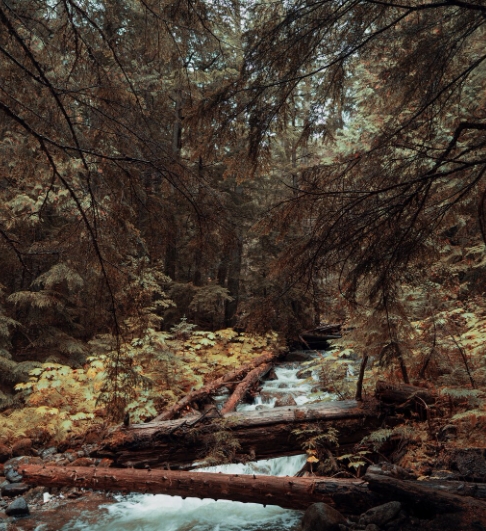
In her published studies, Simard, who initially contemplated a career in writing before her journey into forestry, typically employs cautious and conservative language. However, when addressing the general public, she embraces metaphor and imagination, a style that can make some scientists uneasy. During a 2016 TED Talk, Simard paints a vivid picture of “a world of infinite biological pathways,” species that exist “in a delicate balance like yin and yang,” and venerable trees that “transmit messages of wisdom to the next generation of seedlings.” She affectionately refers to the oldest, largest, and most interconnected trees in a forest as “mother trees,” a term meant to convey their nurturing role, even if they are not biologically related to the younger trees. In her book, she draws comparisons between mycorrhizal networks and the human brain, and she openly discusses her profound spiritual connection to forests.
A few of the scientists I spoke with expressed concerns that Simard’s research might not entirely validate her most audacious assertions and that the mainstream literature associated with her work occasionally misrepresents the genuine characteristics of plants and forests. For instance, in his widely read book “The Hidden Life of Trees,” forester Peter Wohlleben suggests that trees intricately share nutrients and water among themselves, that they may derive pleasure from the symbiosis with fungi in their roots, and that they exhibit something akin to “maternal instincts.”
“There’s value in engaging the public with the fascinating mechanisms that drive forest ecosystems, but sometimes the speculations can become too exaggerated,” remarked Hoeksema.
“It will be intriguing to observe how much experimental evidence emerges to substantiate some of the grand concepts that have sparked our enthusiasm.”
At present, numerous researchers have independently confirmed most of Simard’s key findings. It’s widely acknowledged that resources flow among trees and other plants interconnected by mycorrhizal networks. Additionally, most ecologists concur that the carbon exchange among trees is sufficient to support seedlings and provide assistance to older trees under various stresses, such as injury or dense shading. However, there is still ongoing debate among researchers about whether this carbon transfer significantly impacts healthy mature trees. At a more fundamental level, the exact reasons behind resource exchange among trees, particularly when they are not closely related, remain unclear.
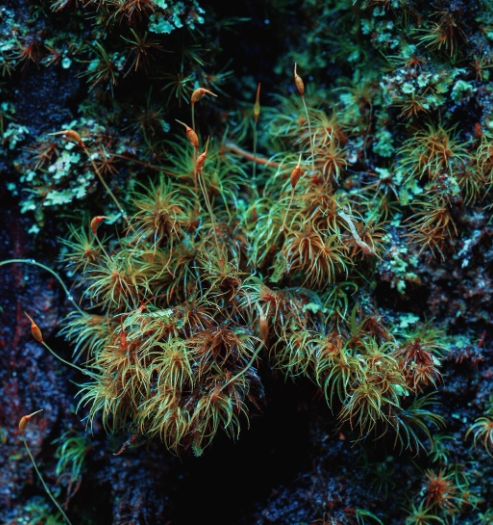
In their autobiographies, Charles Darwin and Alfred Russel Wallace both attributed their independent formulations of evolution by natural selection to the influence of Thomas Malthus. Malthus’s 1798 essay on population played a pivotal role in helping these naturalists comprehend that all living organisms were engaged in an ongoing struggle for limited natural resources. Additionally, Darwin found inspiration in the ideas of Adam Smith, who posited that societal order and efficiency could arise from competition among inherently self-interested individuals in a free market. Darwin would go on to demonstrate that the Earth’s remarkable diversity of species and their intricate relationships were the result of inevitable processes of competition and selection, rather than the outcome of divine craftsmanship. Evolutionary biologist Richard Lewontin aptly described Darwin’s theory of evolution by natural selection as a reflection of 19th-century capitalism on a grand scale.
Nevertheless, as Darwin was well aware, ruthless competition didn’t represent the sole mode of interaction among organisms. Examples abounded in the natural world where selflessness and cooperation prevailed. Ants and bees would readily sacrifice themselves to protect their colonies, while vampire bats shared regurgitated blood to prevent starvation among group members. Vervet monkeys and prairie dogs would raise alarms to warn their peers of approaching predators, even at the risk of their own safety. At one point, Darwin himself expressed concern that such altruistic behaviors could potentially undermine his theory. However, as evolutionary biology and genetics advanced over subsequent centuries, scientists eventually arrived at a resolution to this apparent paradox: What seemed like altruism often could be explained as another manifestation of the drive of selfish genes, a phenomenon known as kin selection. In tightly-knit social groups, individuals typically shared a significant portion of their DNA. Hence, when one individual made sacrifices for another, it was indirectly promoting the spread of its own genes.
However, kin selection falls short in explaining the apparent selflessness observed among trees when they interact across different species—a phenomenon that appears to lean toward socialism. As an alternative explanation, some scientists have proposed a familiar possibility: what appears as generosity among trees might actually be a form of selfish manipulation by fungi. Descriptions of Simard’s work can sometimes give the impression that mycorrhizal networks are passive channels primarily existing for the mutual benefit of trees. However, it’s crucial to recognize that the thousands of fungal species connecting trees are living organisms with their own motivations and necessities. When a plant provides carbon to fungi on its roots, it raises the question of why these fungi would simply transfer that carbon to another plant rather than utilizing it for their own purposes. It’s possible that they don’t. It might be the case that the fungi exert a degree of control, and what appears as one tree generously sharing food with another might actually result from fungi redistributing accumulated resources to advance their own interests and those of their preferred partners.
“While some scientists perceive a significant cooperative collective, I perceive a relationship of reciprocal exploitation,” stated Toby Kiers, a professor of evolutionary biology at Vrije Universiteit Amsterdam. “Both parties may derive benefits, but they are also engaged in a constant struggle to maximize their individual gains.”
Kiers is among several scientists whose recent research has revealed that plants and symbiotic fungi engage in systems of rewarding and punishing one another, essentially forming trade agreements and imposing embargoes. These studies have shown that mycorrhizal networks can intensify conflicts among plants. In certain experiments, fungi have refrained from providing nutrients to uncooperative plants and strategically redirected phosphorus to resource-scarce regions where they can demand high compensation from needy plants.
Many of the ecologists I spoke with concurred that irrespective of the underlying mechanisms driving the exchange of resources and chemical signals within a forest’s intricate web of symbiosis, the ultimate outcome remains consistent: What one tree generates can nourish, educate, or revitalize another. This reciprocity may not guarantee universal harmony, but it certainly challenges the doctrine of individualism and moderates the perception of competition as the sole driving force behind evolution.
The most revolutionary interpretation of Simard’s discoveries suggests that a forest functions “as if it were a single organism,” as she articulates in her TED Talk. Some scientists have postulated that cooperation within or among species can evolve when it provides an advantage to one population over another — for instance, an altruistic forest community outlasting a selfish one. This theory has faced resistance from most biologists, who consider natural selection at levels beyond the individual as evolutionarily unstable and exceptionally rare. However, in light of research on microbiomes, a few scientists have recently argued for the need to reconsider the traditional concept of an individual organism. They propose that multicellular creatures and their symbiotic microbes should be viewed as unified units of natural selection. Even if the exact set of microbial associates isn’t inherited vertically from one generation to the next, the functional relationships between a species and its community of microorganisms persist, much like the mycorrhizal networks in an ancient forest. Humans are not the only species to inherit the legacy of past microbial communities.

The evolving comprehension of trees as social beings carries pressing implications for forest management.
For millennia, humans have depended on forests for sustenance, medicinal resources, and construction materials. Similarly, forests have offered nourishment and refuge to numerous species throughout history. However, their significance goes even deeper. Forests serve as vital organs of our planet. The emergence of land plants around 425 to 600 million years ago and the subsequent expansion of forests played a crucial role in generating the breathable atmosphere we enjoy today, with its abundant oxygen levels. Forests release water vapor, fungal spores, and various chemical compounds into the atmosphere, initiating cloud formation, reflecting sunlight, and delivering essential precipitation to regions that might otherwise become arid. Scientists estimate that, collectively, forests store an impressive amount of carbon, ranging from 400 to 1,200 gigatons, potentially surpassing the atmospheric carbon pool.
Significantly, a substantial portion of this carbon is stored within forest soils, firmly held by intricate networks of symbiotic roots, fungi, and microorganisms. Every year, the world’s forests capture more than 24 percent of the global carbon emissions. However, the detrimental impact of deforestation, which involves cutting down and removing trees that otherwise would continue sequestering carbon, can severely undermine this beneficial effect. When a mature forest is subjected to burning or clear-cutting, it results in the loss of a priceless ecosystem and one of the most efficient mechanisms for climate regulation on our planet. The destruction of an old-growth forest doesn’t merely entail the loss of magnificent individual trees but also represents the collapse of an ancient community where different species engage in reciprocal relationships and compromises that are indispensable for the continued existence of the Earth as we’ve come to know it.
One sunny morning, Simard and I hopped into her truck and made our way up a forested mountain to an area that had been repeatedly logged. We found ourselves surrounded by a vast expanse of bare soil, dotted with tree stumps, young saplings, and piles of woody debris. Curious, I inquired about the potential age of the trees that once thrived here. “We can actually determine that,” she replied, crouching down next to a neatly cut Douglas fir stump. She proceeded to count the growth rings, elucidating how variations in their thickness reflected the changing environmental conditions over time. A few minutes later, she reached the outermost rings, exclaiming, “102, 103, 104!” She added a few extra years to account for early growth. It became evident that this particular Douglas fir had likely been alive in 1912, the same year the Titanic sank, Oreos made their debut, and the mayor of Tokyo gifted Washington with 3,020 ornamental cherry trees.
Gazing across the valley at the mountains, we could discern the historical traces of clearcutting that spanned the past century. Curving dirt roads meandered up and down the steep terrain. Sections of the slopes were densely cloaked in coniferous forests, while others presented treeless meadows, sparsely vegetated shrubland, or barren soil scattered with the weathered remains of sun-bleached tree trunks and branches. When taken in as a unified whole, this irregularly shorn landscape evoked the image of a dog afflicted with mange.
When Europeans first set foot on the shores of America in the 1600s, they encountered vast forests that stretched across approximately one billion acres of what would become the United States, accounting for nearly half of the country’s total land area. However, between 1850 and 1900, the production of timber in the U.S. surged dramatically, reaching over 35 billion board feet from a previous five billion. By the year 1907, more than 260 million acres of the original forested expanse had been depleted. Similarly, during the 19th century, Canada’s forests also suffered the consequences of exploitative practices. As urban centers drew people away from rural and agricultural regions, and lumber companies were compelled to replant areas they had previously logged, trees gradually reclaimed their former habitats. As of 2012, the United States boasted an impressive 760 million acres of forested land. However, it’s essential to note that the age, health, and composition of America’s forests have undergone significant changes. For instance, while forests now cover 80 percent of the Northeast, less than 1 percent of its old-growth forests remain in their pristine state.

While clearcutting is not as prevalent as it once was, it still occurs on approximately 40 percent of logged acreage in the United States and a significant 80 percent in Canada. In a thriving forest ecosystem, the lush understory plays a vital role in capturing substantial amounts of rainwater, and the dense network of roots enriches and stabilizes the soil. However, the practice of clearcutting disrupts these living components, leading to an increased risk of landslides and floods, the depletion of soil nutrients, and the potential release of stored carbon into the atmosphere. Additionally, when sediment from clearcut areas enters nearby rivers and streams, it can have detrimental effects on aquatic life and contaminate sources of drinking water. Furthermore, the sudden removal of numerous trees has a negative impact on countless species of birds, mammals, reptiles, and insects, often displacing or harming them in the process.
Simard’s research highlights an even more foundational rationale for avoiding the complete removal of trees from a logging site. Following our observation of the clear-cut areas, we embarked on a journey the next day, crossing Kootenay Lake on a cable ferry and venturing into the Harrop-Procter Community Forest. This expansive territory encompasses nearly 28,000 acres of rugged terrain adorned with Douglas fir, larch, cedar, and hemlock. During the early 1900s, a significant portion of this forest along the lake was subjected to fires, primarily to create space for settlements, roads, and mining activities. Presently, the land is under the stewardship of a local cooperative that practices environmentally conscious forestry methods.
The journey up the mountain was rugged, marked by a dusty and obstacle-strewn road. “Hold on to your nips and your nuts!” Simard exclaimed as she skillfully guided her truck out of a ditch and navigated over a series of substantial branches, causing our seats to jolt. Eventually, she parked near a steep slope, exited the driver’s seat, and began to agilely traverse what seemed like an endless expanse of pine needles, stumps, and shattered tree trunks. Simard moved so swiftly that I had difficulty keeping pace until we had crossed most of the debris and arrived at a clearing. While much of the ground appeared barren and brown, there were occasional exceptions where century-old Douglas firs soared to heights of 150 feet, displaying their lush green foliage. Each standing tree bore a distinctive blue paint marking around its trunk. Simard clarified that, at her request, Erik Leslie, the Harrop-Procter Forest Manager, had identified and designated the oldest, largest, and healthiest trees on this site for preservation before any logging took place.
When a seed begins to sprout in an old-growth forest, it promptly connects with an extensive underground network of partnerships between different species. In contrast, uniform plantations of young trees established following clear-cutting lack these ancient roots and their beneficial fungal companions. In these surrogate forests, the trees are significantly more susceptible to diseases and mortality because, despite being surrounded by their peers, they are essentially left without the nurturing presence of their elders. Simard’s belief is that preserving certain mother trees, possessing the most robust and diverse mycorrhizal networks, can significantly enhance the health and survival prospects of upcoming seedlings—whether they are intentionally planted by foresters or naturally sprouting on their own.
Over the past few years, Simard has joined forces with fellow scientists, North American timber companies, and several First Nations communities to put this concept to the test. She refers to this ongoing endeavor as the Mother Tree Project. In 27 designated areas spanning nine distinct climatic zones within British Columbia, Simard and her collaborators have been conducting comparisons between traditional clear-cutting practices and harvested regions that retain different proportions of mature trees: 60 percent, 30 percent, or even as low as 10 percent—equating to around eight trees per acre. She directed my gaze across Kootenay Lake to the neighboring mountains, where additional experimental plots were clearly visible. Although these areas appeared somewhat sparse in vegetation, there was a discernible pattern to the forest thinning, resembling the meticulous removal of specific trees, one by one.
Since at least the late 1800s, foresters in North America have explored and tested numerous alternatives to the conventional clearcutting practice. These alternatives include strip cutting (where narrow bands of trees are removed), shelterwood cutting (a phased process allowing desirable seedlings to establish before most overstory trees are harvested), and the seed-tree method (which retains some adult trees for future seed production), among others. These methods are employed across Canada and the United States for various ecological considerations, often aimed at benefiting wildlife. However, the role of mycorrhizal networks has seldom, if ever, been a significant factor in these decisions.
Sm’hayetsk Teresa Ryan, a forest ecologist with Tsimshian heritage who conducted her graduate studies under Simard’s guidance, pointed out that research on mycorrhizal networks and the forestry practices informed by it align with indigenous wisdom and traditions. These are forms of knowledge that European settlers frequently disregarded or failed to acknowledge. She emphasized:
“Everything is interconnected, without a doubt. Many indigenous communities share stories that emphasize the connections among all the species in the forests, including discussions about underground networks.”
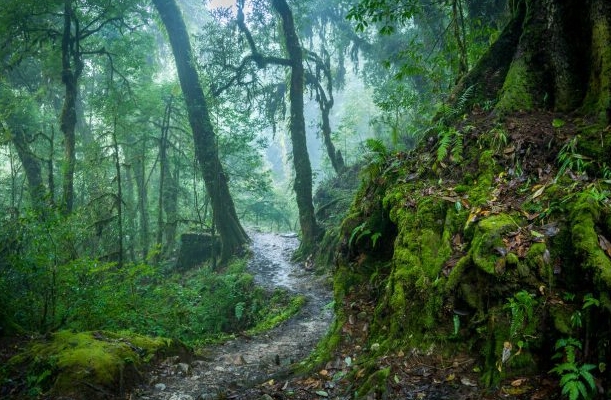
Ryan shared with me the remarkable example of the Menominee Forest in northeastern Wisconsin, covering 230,000 acres, which has been practicing sustainable forestry for over 150 years. For the Menominee, sustainability involves “thinking in terms of whole systems, with all their interconnections, consequences, and feedback loops.” They maintain a substantial, aged, and diverse stock of trees, giving priority to removing lower-quality or unhealthy trees while allowing others to age for over 200 years, essentially becoming what Simard would describe as “grandmothers.” The Menominee Forest’s management is driven by ecological considerations rather than purely economic ones, yet it remains highly profitable. Since 1854, they have harvested over 2.3 billion board feet of timber, nearly double the forest’s initial volume, showcasing their unique approach to forest stewardship. As the Menominee stated in one of their reports:
“To many, our forest may seem pristine and untouched, but, in reality, it is one of the most intensively managed tracts of forest in the Lake States.”
In the midst of a mid-June afternoon, Simard and I embarked on a 20-minute drive from Nelson to a valley nestled beneath the Selkirk Mountains, which transform into a bustling ski resort during the winter months. Accompanied by one of her students and his friend, we gathered our gear – shovels, water bottles, bear spray – and commenced a hike up the rugged slope leading to a community of subalpine conifers. Our mission was to examine mycorrhizas on the roots of whitebark pine, an endangered species that plays a crucial role in supporting a variety of wildlife, including grizzly bears, Clark’s nutcrackers, and Douglas squirrels.
Approximately an hour into our hike, we stumbled upon one of the trees: a petite specimen adorned with vibrant leaves and sporting an ash-colored trunk. Simard and her team knelt beside its base, wielding shovels and knives to carefully unearth its roots. The process unfolded slowly, demanding both physical effort and patience. Relentless mosquitoes and gnats buzzed around us, making their presence known on our skin and necks. I peered over their shoulders, hoping for a clearer view, but for quite some time, there was little to discern. However, as the excavation continued, the roots gradually transitioned to a deeper hue, becoming finer and more delicate. Then, suddenly, Simard revealed a delicate network of minute white filaments intricately woven into the soil.
“Wow!” she exclaimed, her face lighting up with excitement.
“This is incredible! Unbelievable!”
She paused, realizing she’d used strong language, and whispered:
“I apologize for the expletives; professors are expected to refrain from swearing.” I inquired, “Is that a mycorrhiza?”
She responded, still chuckling with delight:
“It’s a mycorrhizal network! Isn’t it fascinating? This is undoubtedly a mycorrhizal tip.”
She handed me a slender root strip about the length of a pencil, adorned with numerous rootlets still adorned with soil particles. These rootlets then branched into even finer, thread-like filaments. As I strained to examine the intricate details, I realized that the tiniest fibers’ tips seemed to be coated with small waxy nodules. Simard clarified that these sticky white nodules were mycorrhizal fungi, which had established themselves on the pine’s roots. They served as the central hubs from which root and fungus extended their interconnected cables through the soil, creating pathways for trade and communication, ultimately uniting individual trees into cooperative networks. This intricate structure comprised the very essence of the forest—the underpinning of some of the most populous and intricate societies on Earth.
Throughout history, trees have consistently symbolized connection. In Mesoamerican mythology, a colossal tree stands at the universe’s core, extending its roots into the underworld and embracing earth and heaven within its trunk and branches. Norse cosmology similarly features a tree known as Yggdrasil. A well-known Japanese Noh drama narrates the story of wedded pines, eternally bound despite their considerable separation. Even prior to Darwin, naturalists employed tree-like diagrams to illustrate the lineages of distinct species. However, for most of documented history, living trees harbored a remarkable secret: Their renowned interconnectedness transcended mere metaphor—it possessed a tangible existence. As I knelt beneath that whitebark pine, gazing at its root tips, it struck me that throughout my entire life, I had never truly comprehended the essence of a tree. At best, I had only perceived one facet of a being that seemed self-contained but was, in reality, an intricate amalgamation of staggering proportions.
We, too, are composite beings. Our bodies host diverse microbial communities that regulate our immune systems and aid in the digestion of specific foods. The organelles within our cells responsible for energy production, called mitochondria, were once independent bacteria that were incorporated early in the evolution of multicellular organisms. Through a process known as horizontal gene transfer, various life forms, such as fungi, plants, animals, and humans, have consistently exchanged DNA with bacteria and viruses. From their skin, fur, or bark down to their genetic makeup, every multicellular organism is a fusion of other life forms. Wherever life emerges, it finds connections, intermingles, and amalgamates.
Half a billion years ago, during the transition of plants and fungi from water to land, they confronted vast stretches of barren rock and nutrient-poor soil. While plants could convert sunlight into energy-rich sugars, they struggled to extract essential mineral nutrients from the ground. Fungi, on the other hand, faced the inverse challenge. Had they remained separate entities, their initial attempts at colonization might have encountered obstacles or been unsuccessful. Instead, these two disparate life forms, belonging to entirely different biological kingdoms, established a close symbiotic relationship. Together, they proliferated across continents, converting rock into fertile soil and enriching the atmosphere with oxygen.
As time passed, various plant and fungi species evolved into more specialized forms of symbiosis. Forests expanded and diversified, both in their visible above-ground aspects and their intricate subterranean networks. What one tree produced was no longer restricted to itself and its specific symbiotic partners. Through intricate networks of roots and fungi hidden beneath the soil, water, nutrients, and information within a forest began to traverse greater distances and follow increasingly complex patterns. Over countless eons, driven by the cumulative effects of symbiosis and coevolution, forests gradually developed a kind of circulatory system. Trees and fungi, once small and unfamiliar pioneers from the ocean, still carrying traces of their watery origins, sought new opportunities together. In time, they transformed into a collective life form of unparalleled power and generosity.
After spending several hours excavating roots and gathering samples, we embarked on our descent down the valley. In the distance, the rocky summits of the Selkirk Mountains adorned themselves with clusters of evergreen trees. A gentle breeze carried the fragrant aroma of pine in our direction. To our right, an elusive squirrel hurriedly buried a treasure in the soil before darting away. In that moment, a passage from “The Overstory” unexpectedly sprouted in my mind:
“There are no solitary entities here. Not even distinct species. Within the forest, everything is the forest itself.”